 W
WInvisibility in fiction is a common plot device in stories, plays, films, animated works, video games, and other media, found in both the fantasy and science fiction genres. In fantasy, invisibility is often invoked and dismissed at will by a person, with a magic spell or potion, or a cloak, ring or other object. Alternatively, invisibility may be conferred on an unsuspecting person by a sorcerer, witch, or curse. In science fiction, invisibility is often conferred on the recipient as part of a complex technological or scientific process that is difficult or impossible to reverse, so that switching back and forth at frequent intervals is less likely to be depicted in science fiction. Depending on whether the science fiction is hard science fiction or soft science fiction, the depictions of invisibility may be more rooted in actual or plausible technologies, or more on the fictional or speculative end of the spectrum.
 W
WBeauty: A Retelling of the Story of Beauty and the Beast was first published in 1978, written by American children's book author Robin McKinley. It was her first book, retelling the classic French fairy tale La Belle et La Bete. The book was the 1998 Phoenix Award honor book. It was the 1966 -1988 Best of the Best Books for Young Adults.
 W
WIn classical mythology, the Cap of Invisibility is a helmet or cap that can turn the wearer invisible. It is also known as the Cap of Hades or Helm of Hades. Wearers of the cap in Greek myths include Athena, the goddess of wisdom, the messenger god Hermes, and the hero Perseus. The Cap of Invisibility enables the user to become invisible to other supernatural entities, functioning much like the cloud of mist that the gods surround themselves in to become undetectable.
 W
WFrog Detective 2: The Case of the Invisible Wizard is a 2019 video game by Grace Bruxner and Thomas Bowker. Gameplay revolves around the player's role as Frog Detective, a detective frog who is trying to solve a mystery. It is the sequel to The Haunted Island, a Frog Detective Game.
 W
WA cloak of invisibility is a fictional theme. In folklore, mythology and fairy tales, a cloak of invisibility appears either as a magical item used by duplicitous characters or an item worn by a hero to fulfill a quest. It is a common theme in Welsh and Germanic folklore, and may originate with the cap of invisibility seen in ancient Greek myths. The motif falls under "D1361.12 magic cloak of invisibility" in the Stith Thompson motif index scheme.
 W
WA cloaking device is a hypothetical or fictional stealth technology that can cause objects, such as spaceships or individuals, to be partially or wholly invisible to parts of the electromagnetic (EM) spectrum. However, over the entire spectrum, a cloaked object scatters more than an uncloaked object.
 W
WCold Tom is a fantasy novel by Sally Prue, published on January 31, 2002 by Oxford University Press and aimed at teens and young adults. Cold Tom won the Branford Boase Award and the Smarties Prize Silver Award both in 2002.
 W
WCrysis is a first-person shooter video game developed by Crytek and published by Electronic Arts for Microsoft Windows and released in November 2007. It is the first game in the Crysis series. A standalone expansion entitled Crysis Warhead was released in 2008, following similar events as Crysis but from a different narrative perspective. At the time Crysis was released, and years thereafter, it has been praised for its milestones in graphical design.
 W
WCrysis 2 is a first-person shooter video game developed by Crytek, published by Electronic Arts and released in North America, Australia and Europe in March 2011 for Microsoft Windows, PlayStation 3, and Xbox 360. Officially announced on June 1, 2009, the game is the second main installment of the Crysis series, and a sequel to the 2007 video game Crysis, and its expansion Crysis Warhead. The story was written by Richard Morgan, while Peter Watts was consulted and wrote a novel adaptation of the game. It was the first game to showcase the CryEngine 3 game engine and the first game using the engine to be released on consoles. A sequel, Crysis 3, was released in 2013. A remastered version, following in the steps of Crysis Remastered, was released in 2021, for the Nintendo Switch, PlayStation 4, Xbox One and PC.
 W
WCrysis 3 is a 2013 first-person shooter video game developed by Crytek and published in 2013 by Electronic Arts. It is the third and final main game of the Crysis series, a sequel to the 2011 video game Crysis 2. The multiplayer portion of the game was developed by Crytek UK. Crysis 3's story revolves around Prophet, a Nanosuit holder who is on a quest to take revenge on the Alpha Ceph, the leader of the Ceph alien race. The game's story serves as the end of the Crysis trilogy. Gameplay revolves around the use of the Nanosuit, which grants players a variety of abilities such as being invisible. New features introduced in Crysis 3 include a new Nanosuit ability called "Rip & Throw", a compound bow and hacking, which allows players to hack into enemies' equipment, drones, and security defenses.
 W
WDanny Dunn, Invisible Boy is the thirteenth novel in the Danny Dunn series of juvenile science fiction/adventure books written by Raymond Abrashkin and Jay Williams. The book was first published in 1974.
 W
WDeus Ex: Human Revolution is an action role-playing game developed by Eidos Montréal and published by Square Enix's European subsidiary in August 2011 for Windows, PlayStation 3, and Xbox 360. A version for OS X was released the following year. It is the third game in the Deus Ex series, and a prequel to the original Deus Ex (2000). The gameplay—combining first-person shooter, stealth, and role-playing elements—features exploration and combat in environments connected to multiple city-based hubs, in addition to quests that grant experience and allow customization of the main character's abilities with items called Praxis Kits. Conversations between characters feature a variety of responses, with options in conversations and at crucial story points affecting how some events play out.
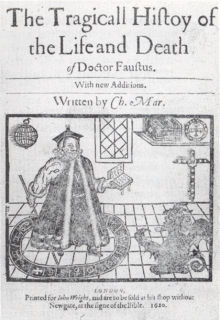 W
WThe Tragical History of the Life and Death of Doctor Faustus, commonly referred to simply as Doctor Faustus, is an Elizabethan tragedy by Christopher Marlowe, based on German stories about the title character Faust. It was written sometime between 1589 and 1592, and may have been performed between 1592 and Marlowe's death in 1593. Two different versions of the play were published in the Jacobean era several years later.
 W
WFade is a 1988 young adult novel written by Robert Cormier.
 W
WThe Fantastic Four is a fictional superhero team appearing in American comic books published by Marvel Comics. The team debuted in The Fantastic Four #1, helping usher in a new level of realism in the medium. It was the first superhero team created by artist/co-plotter Jack Kirby and editor/co-plotter Stan Lee, who developed a collaborative approach to creating comics with this title.
 W
WFearsome Tales for Fiendish Kids is a 1996 children's fantasy horror book written by British author Jamie Rix. It is the third book in the Grizzly Tales for Gruesome Kids series. It was published by Hodder Children's Books and was the last in the series to be published before the cartoon adaptation, containing 16 short stories, one story more than the previous two books.
 W
WThe Fortress of Solitude is a 2003 semi-autobiographical novel by Jonathan Lethem set in Brooklyn and spanning the 1970s, '80s, and '90s. It follows two teenage friends, Dylan Ebdus and Mingus Rude, one white and one black, who discover a magic ring. The novel explores the issues of race and culture, gentrification, self-discovery, and music. The novel's title is a reference to the Fortress of Solitude, a fortress constructed for Superman.
 W
WGemini Man is a short-lived American action-adventure drama series that aired on NBC in 1976. The third television series based on H. G. Wells' 1897 science fiction novel The Invisible Man, Gemini Man was created to replace the previous season's The Invisible Man using simpler and less expensive special effects.
 W
WGoober and the Ghost Chasers is Australian-American animated television series produced by Hanna-Barbera Productions, animated by Eric Porter Studios in Australia and broadcast on ABC from September 8, 1973, to August 30, 1975. A total of 16 half-hour episodes of Goober and the Ghost Chasers were produced. The show's episodes were later serialized as part of the syndicated weekday series Fred Flintstone and Friends in 1977–78. On cable, it was shown as part of USA Cartoon Express and on Boomerang starting in 2000.
 W
WHarry Potter is a series of seven fantasy novels written by British author J. K. Rowling. The novels chronicle the lives of a young wizard, Harry Potter, and his friends Hermione Granger and Ron Weasley, all of whom are students at Hogwarts School of Witchcraft and Wizardry. The main story arc concerns Harry's struggle against Lord Voldemort, a dark wizard who intends to become immortal, overthrow the wizard governing body known as the Ministry of Magic and subjugate all wizards and Muggles.
 W
WHell Girl , also known as Jigoku Shōjo: Girl from Hell, is a Japanese anime series conceptualized by Hiroshi Watanabe and produced by SKY Perfect Well Think, Tokyo MX, Wakasa Seikatsu, Fujishoji, Aniplex and Studio Deen. It is directed by Watanabe and Takahiro Omori, with Kenichi Kanemaki handling series composition, Mariko Oka designing the characters and Yasuharu Takanashi, Hiromi Mizutani and Kenji Fujisawa composing the music. The series focuses on the existence of a supernatural system that allows people to take revenge by having other people sent to Hell via the services of the mysterious title character and her assistants who implement this system. Revenge, injustice, hatred, and the nature of human emotions are common themes throughout the series.
 W
W"In the Walls of Eryx" is a short story by American writers H. P. Lovecraft and Kenneth J. Sterling, written in January 1936 and first published in Weird Tales magazine in October 1939. It is unusual among Lovecraft's work, being a standard science fiction story involving space exploration in the near future.
 W
WThe Invisible Man is a film series by Universal Pictures. The series consists of The Invisible Man, The Invisible Man Returns, The Invisible Woman, Invisible Agent, The Invisible Man's Revenge and Abbott and Costello Meet the Invisible Man. The film series borrows elements from H. G. Wells's novel The Invisible Man, but it focuses primarily on the idea of a serum that causes someone to go invisible and its side-effects.
 W
WThe Invisible Man is a science fiction novel by H. G. Wells. Originally serialized in Pearson's Weekly in 1897, it was published as a novel the same year. The Invisible Man to whom the title refers is Griffin, a scientist who has devoted himself to research into optics and who invents a way to change a body's refractive index to that of air so that it neither absorbs nor reflects light. He carries out this procedure on himself and renders himself invisible, but fails in his attempt to reverse it. A practitioner of random and irresponsible violence, Griffin has become an iconic character in horror fiction.
 W
WThe Invisible Man is a British black-and-white science fiction television series that aired on ITV from September 1958 to July 1959. It was aired on CBS in the United States, running two seasons and totalling 26 half-hour episodes. The series was nominally based on the 1897 novel by H. G. Wells, one of four such television series. In this version, the deviation from the novel went as far as changing the main character's name from Dr. Griffin to Dr. Peter Brady who remained a sane man, not a power-hungry lunatic as in the book or the 1933 film adaptation. None of the other characters from the novel appeared in the series.
 W
WThe Invisible Man is a Sci-Fi American television series starring Vincent Ventresca, Paul Ben-Victor, Eddie Jones, Shannon Kenny and Michael McCafferty. It aired for two seasons, from June 9, 2000 to February 1, 2002.
 W
WThe Invisible Plane is the fictional DC Comics superheroine Wonder Woman's venerable, though now seldom-used, mode of transport. Created by William Moulton Marston as an allegory for how women of the Depression Era onward had easily come into the male dominated work place in droves, unchallenged, with those women's readier feminine compliance emotion, among other factors, making that possible. It first appeared in Sensation Comics #1.
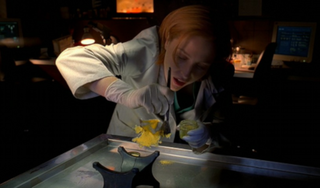 W
W"Je Souhaite" is the twenty-first episode of the seventh season of the science fiction television series The X-Files. It premiered on the Fox network in the United States on May 14, 2000. It was written and directed by Vince Gilligan. The episode is a "Monster-of-the-Week" story, unconnected to the series' wider mythology. "Je Souhaite" earned a Nielsen household rating of 8.2, being watched by 12.79 million people in its initial broadcast, and received mostly positive reviews from critics. The title means "I Wish" in French.
 W
WThe Land of Oz is a magical country first introduced in the 1900 children's novel The Wonderful Wizard of Oz written by L. Frank Baum and illustrated by W. W. Denslow.
 W
WThe Last Invisible Boy is a 2008 children's novel by Evan Kuhlman. The book was first published in hardback on October 21, 2008 through Atheneum Books for Young Readers. The work follows Finn, a young boy dealing with the sudden death of his father.
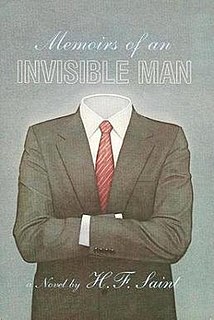 W
WMemoirs of an Invisible Man is a 1987 science fiction novel by H. F. Saint.
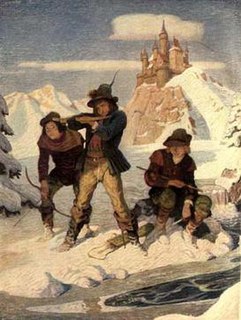 W
WThe Mysterious Stranger is a novel attempted by the American author Mark Twain. He worked on it intermittently from 1897 through 1908. Twain wrote multiple versions of the story; each involves a supernatural character called "Satan" or "No. 44". All the versions remained unfinished.
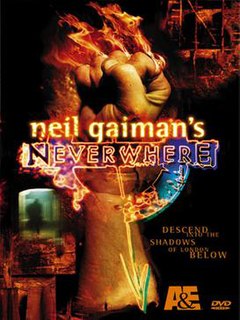 W
WNeverwhere is an urban fantasy television series by Neil Gaiman that first aired in 1996 on BBC Two. The series is set in "London Below", a magical realm coexisting with the more familiar London, referred to as "London Above". It was devised by Neil Gaiman and Lenny Henry and directed by Dewi Humphreys. Gaiman adapted the series into a novel, which was released in September 1996. The series and book were partially inspired by Gene Wolfe's novel Free Live Free.
 W
WThe Oath is an allegorical 1995 horror/fantasy novel by Frank E. Peretti. The recipient of the 1996 ECPA Gold Medallion Book Award for Best Fiction, The Oath is one of Peretti's most critically acclaimed and layered novels, having sold over one million copies worldwide. The story centers on the fictional mining town of Hyde River, the gruesome deaths of many of the townspeople, and an "oath" that the residents of Hyde River have taken up to hide the secret behind them.
 W
WThe Secret of Wilhelm Storitz is a fantasy novel by Jules Verne, published by Louis-Jules Hetzel in 1910. The manuscript was written around 1897. It was the last one Verne sent to Hetzel.
 W
WThe Tempest is a play by English playwright William Shakespeare, probably written in 1610–1611, and thought to be one of the last plays that Shakespeare wrote alone. After the first scene, which takes place on a ship at sea during a tempest, the rest of the story is set on a remote island, where the sorcerer Prospero, a complex and contradictory character, lives with his daughter Miranda, and his two servants—Caliban, a savage monster figure, and Ariel, an airy spirit. The play contains music and songs that evoke the spirit of enchantment on the island. It explores many themes, including magic, betrayal, revenge, and family. In Act IV, a wedding masque serves as a play-within-a-play, and contributes spectacle, allegory, and elevated language.
 W
WThe first season of the military science fiction television series Stargate SG-1 commenced airing on the Showtime channel in the United States on July 27, 1997, concluded on the Sci Fi channel on March 6, 1998, and contained 22 episodes. The show itself is a spin-off from the 1994 hit movie Stargate written by Dean Devlin and Roland Emmerich. Stargate SG-1 re-introduced supporting characters from the film universe, such as Jonathan "Jack" O'Neill and Daniel Jackson and included new characters such as Teal'c, George Hammond and Samantha "Sam" Carter. The first season was about a military-science expedition team discovering how to use the ancient device, named the Stargate, to explore the galaxy. However, they encountered a powerful enemy in the film named the Goa'uld, who are bent on destroying Earth and all who oppose them.
 W
WThings Not Seen is a first-person novel written by Andrew Clements and his third novel after Frindle and The Landry News. The story revolves around Bobby, who wakes up invisible, and as he tries to get back to normal befriends a blind girl. The title is apparently taken from Hebrews 11:1, "Now faith is the substance of things hoped for, the evidence of things not seen" in the King James Version of the Bible. The book was originally released in 2002 by Philomel Books, an imprint of Penguin Group, but was re-released in 2006 as a platinum edition by Puffin. The platinum edition includes a short interview with Andrew Clements and a redesigned cover.
 W
WThe Voyage of the Dawn Treader is a high fantasy novel for children by C. S. Lewis, published by Geoffrey Bles in 1952. It was the third published of seven novels in The Chronicles of Narnia (1950–1956) and Lewis had finished writing it in 1950, before the first book was out. It is volume five in recent editions, which are sequenced according to the novels' internal chronology. Like the others, it was illustrated by Pauline Baynes and her work has been retained in many later editions. It is the only Narnia book that does not have a main villain.